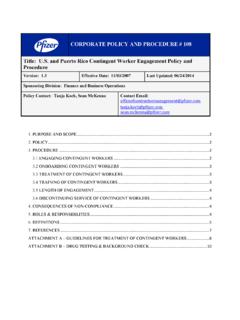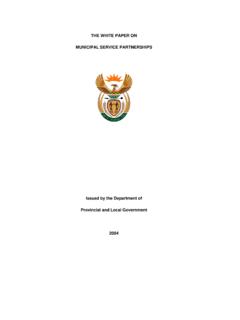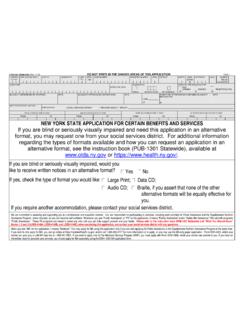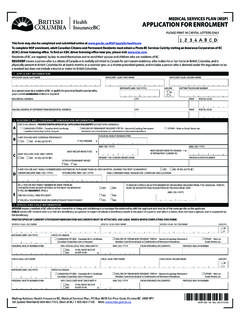Transcription of MSP/EMHSD Publication 101 Michigan Emergency …
1 February 6, 2017. MSP/EMHSD Publication 101 Michigan Emergency Management Plan (MEMP). July 2016 Revision Posted to MSP/EMHSD Web Site ( ). The Michigan State Police, Emergency Management and Homeland Security Division ( MSP/EMHSD ) has completed its latest revision of MSP/EMHSD Publication 101, Michigan Emergency Management Plan (pictured above). The plan, formally endorsed by Michigan Governor Rick Snyder on January 10, 2017, has been posted on the MSP/EMHSD web site ( ) under Grants, Programs & Publications.. Background: The MEMP is developed and maintained by the MSP/EMHSD , in accordance with 1976 Michigan Public Act 390, as amended ( Emergency Management Act), MCL , in partnership with the partner departments, agencies and organizations identified in the plan.
2 The MEMP provides an organizational and operational framework to enable state departments and agencies to mitigate, prepare for, respond to, and recover from emergencies, disasters, threats or incidents actual, imminent or potential that could adversely impact the State of Michigan . The ultimate purposes of the plan are to: 1) protect the safety, health and general well-being of Michigan 's residents and visitors from natural, technological, weapon of mass destruction attack, and human-related hazards occurring in or otherwise impacting the State of Michigan ; 2) protect property and the environment; and 3) ensure that critical services can be provided in a timely and unencumbered manner.
3 The plan is consistent and compatible with the National Incident Management System (NIMS) and National Response Framework (NRF), and meets current planning standards under the Emergency Management Accreditation Program (EMAP). Questions about the MEMP should be directed to F/Lt. Gabriel Covey, MSP/EMHSD State and Local Support Section Manager, at 517-284-3989, or by e-mail at Be advised that the plan will not be distributed via hardcopy or on CD. Note: All prior editions of the MEMP should be discarded, as they are no longer valid. MSP/EMHSD Pub. 101. July 2016. Emergency Management and Homeland Security Division Michigan Department of State Police Michigan Emergency Management Plan 7/16.
4 THIS PAGE INTENTIONALLY LEFT BLANK. 7/16. Michigan Emergency MANAGEMENT PLAN. Table of Contents EXECUTIVE SYNOPSIS. RECORD OF MAJOR REVISIONS TO CURRENT PLAN EDITION (table). PLANNING PRELIMINARIES .. 1. Acronym Guide .. 1. Plan Approval, Maintenance and Distribution .. 5. Approval .. 5. Maintenance .. 5. Distribution .. 5. Plan Purpose and Scope .. 5. Key Legal Authorities .. 6. Federal Government .. 6. State Government .. 6. Local Government .. 7. Situation and Assumptions .. 7. 7. Michigan 's Hazard Base .. 7. Michigan Profile .. 8. Functional Needs Populations .. 9. Assumptions .. 9. Logistics Support and Resource Requirements for Plan Implementation.
5 12. Training and Exercise .. 13. Support Plans and Procedures .. 13. EMAP and NIMS Compliance .. 13. Definitions of Key Terms Used in this Document .. 14. Emergency MANAGEMENT SYSTEM .. 34. Threat and Hazard Identification and Risk Assessment (THIRA) .. 34. Emergency Management System Description .. 34. State Framework .. 35. Local Framework .. 35. Emergency Management and Homeland Security Districts (map) .. 36. Michigan 's Emergency Management System (chart) .. 36. Supplemental Assistance Hierarchy for Incident Response / Recovery (chart) .. 37. Response Procedures .. 37. Local Response .. 37. Request for State Assistance.
6 37. State Emergency / Disaster Declaration .. 38. Provision of State Assistance .. 38. Heightened State of Alert Declaration .. 38. Obtaining Federal Assistance .. 38. Governor's Request for Federal Assistance .. 38. Presidential Declaration .. 39. Provision of Federal Assistance .. 39. Emergency / Disaster Declaration Process (chart) .. 40. Typical Joint Field Office Organizational Structure for State Staff (chart) .. 41. National Response Framework .. 41. National Incident Management System .. 41. Emergency Support Functions .. 42. National Response Framework Emergency Support Functions (table) .. 42-44. Support and Incident Annexes.
7 44. National Response Framework Support and Incident Annexes (table) .. 44-46. Key NRF Coordination Elements .. 46. National Operations Center .. 46. National Infrastructure Coordination Center .. 46. National Response Coordination Center .. 46. 7/16. Regional Response Coordination Center .. 47. Interagency Incident Management 47. Joint Field Office .. 47. Principal Federal Official .. 47. Strategic Information and Operations Center .. 47. National Joint Terrorism Task Force .. 47. National Counterterrorism Center .. 47. Federal Coordinating Officer .. 47. Defense Coordinating Officer .. 47. Senior Federal Law Enforcement Official.
8 48. Joint Task Force Commander .. 48. Joint Operations Center .. 48. National Military Command Center .. 48. Domestic Readiness Group .. 48. Counterterrorism Security Group .. 48. Domestic Emergency Support Team .. 48. State ESF Federal ESF Coordination .. 48. Federal ESF Counterpart State ESF Coordination Matrix (chart) .. 49. Line of Succession for Governor .. 49. State Department / Agency General Responsibilities .. 50. Local Government General Responsibilities .. 50. Emergency SUPPORT FUNCTIONS (ESFs) .. 51. Emergency Support Functions Description (text and chart).. 51-53. Direction and Control ESF .. 54. Notification and 54.
9 State Emergency Operations Center .. 54. State Emergency Operations Center Organization .. 54. SEOC Incident Management System (chart) .. 55. Incident Management Section .. 55. Operations 55. Planning Section .. 56. Logistics Section .. 56. Finance and Administration Section .. 56. Incident Action 56. Compatibility with National Incident Management System .. 56. National Incident Management System .. 56. Field Coordination Facilities .. 56. State Command Post .. 57. Field Team Center .. 57. Joint Field Office .. 57. Typical Joint Field Office Organizational Structure for State Staff (chart) .. 58. Disaster Recovery Center .. 58.
10 Joint Operations Center .. 58. Typical Joint Operations Center Organizational Structure (chart) .. 59. National Structure for Incident Management (chart) .. 60. Task Assignments .. 60. Warning and Communications ESF .. 66. Warning Systems .. 66. NAWAS Warning Points in Michigan (chart) .. 67. Communications Systems .. 68. Information and Planning ESF .. 72. Initial Incident Reporting and Assessment .. 72. MI CIMS Incident Creation and EM Program Status Boards .. 72. Initial Public Information .. 72. Detailed Damage Assessment Report .. 72. MI CIMS Damage Assessment Board .. 73. Information Submittal Timeframe .. 73. 7/16. Backup Submittal Method.














